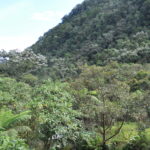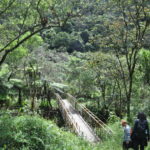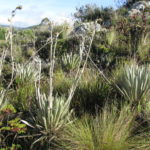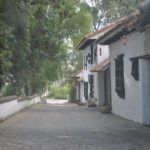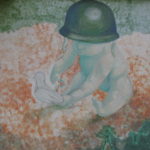Plant Identification
Plant identification is about pattern recognition, and to do it well, it should be a blend of traditional imprinting (learning to recognize something because someone else has told you what it is) and character-based diagnosis (figuring out what something is based on its features). It is about training the eye to see differences and the brain to be able to articulate them. Incorporating an understanding of phylogeny (relationships between groups) can further strengthen ID skills since some features are reliable at different levels of universality, e.g., a characteristic that applies to a species may also apply to related species (in same genus, family, order, etc.). Plant identification is challenging for many people, but the more it can be holistically integrated with everything else we know, the easier it gets. The most important basics include: habit; leaves simple vs. compound, alternate vs. opposite, entire vs. toothed (or lobed), with pellucid dots (or punctations or stellate hairs); stipules present or not; latex present or not; foliage with distinct smell or not; veins pinnate or palmate (or plinerved); flowers sympetalous or apopetalous, floral symmetry; hypanthium present or not; stamen number & arrangement; carpel number; gynoecium syncarpous or apocarpous; ovary inferior or superior. Understand those terms and be able to apply them to what your eyes see, and you can build a knowledge matrix for diagnosing plant families!
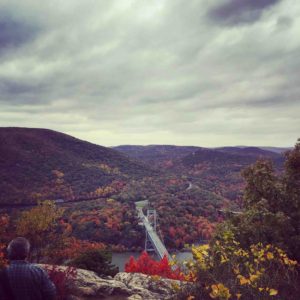
With 300,000+ known vascular plant species globally (and an estimated 50,000+ still undescribed), roughly 20,000 in North America, and 24,000 in a diverse tropical country like Colombia, there is no way for any botanist to hope to know all the species. In the US, a typical state has around 3,000 species (± 1,000) and a typical county around 1,000 (± 500), numbers that can still take years to learn. Most botanists are regional specialists, familiar primarily with the flora of the geographic region where they live or conduct research.
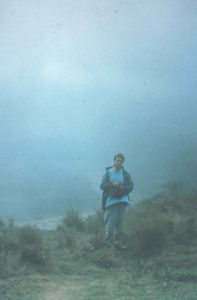
What is a botanist interested in the global flora to do? We specialize taxonomically (focusing on a genus, family, or rarely an order) and, in recent years, have done so to the extent that broadly trained generalists are hard to find these days. When dealing with plants outside our region or taxonomic focus, we typically rely on the skills of other specialists. There is nothing inherently wrong with this system, except that we are losing traditional skillsets, there are virtually no professionals who are paid to be botanical generalists, and many specimens end up sitting for years or decades, either misidentified (misfiled, misplaced) or without being identified. Someone has to recognize a specimen as a particular family (or genus) in order for the right specialist to ever see it. With the right training (& interest and aptitude, of course), a lot more people could develop better generalist plant ID skills. The basics can be learned in a few weeks or months by focusing on norms, but even after years of experience and dedicated effort, there will always be more to learn.
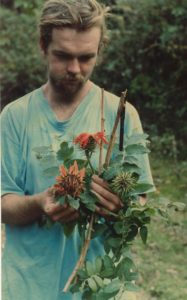
Precise numbers are difficult to calculate, with conflicting estimates by different authors, but there are approximately 60 orders, 500 families, and 15,000 genera of vascular plants. While the world’s best, most experienced botanists might know around 15,000 plants, most people will be lucky to know 5,000-10,000 after years of study. Most orders are not macro-morphologically readily diagnosable, whereas most families are. This makes families the most practical field unit for identification, a logical focus for building and improving plant ID skills.
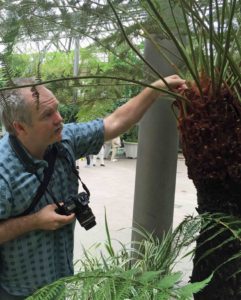
Studying what makes plants different (and the same), how to walk up to an unknown plant and figure out what it is, is a passion of mine. Cultivated plants are cheaper than traveling, enabling one to study exotic plants. But the best way to study a diverse array of plants is to travel, travel, travel, which is botanical practice, practice, practice. For most of us, the nearest weedlot, yard, or woodland has enough diversity for hours or days of plant ID study. Use those plants you know to practice diagnostic features, and before too long you’ll be identifying plants you’ve never seen before!
What I present here are a few select photos from my travels, places where I have conducted field research, to showcase the diversity and beauty of vegetation (with a few extra images thrown in for fun). Travel to these areas honed my plant ID skills and built me as a botanist. With practice (practice, practice), it doesn’t matter whether you’re in North America or Latin America (or anywhere else in the world), most plant families are readily diagnosable once you know what to look for. There are many resources out there to that end, and with institutional support I look forward to creating additional plant ID resources myself, both physical and electronic, for traditional classroom-learning and distance education. Ultimately, there is no substitute for experience, so study the resources, study the plants, travel, and learn… I hope you enjoy the scenery in my photos and dream of all the wonderful plants out there in this big ol’ country, hemisphere, planet…
North America
In the last 25 years, I have botanized extensively throughout the US, living in 7 states coast to coast (taking on botanical jobs and education, always in pursuit of additional botanical knowledge) and collecting plants in every state except Alaska. Although the distinctions are rather arbitrary, I present the following information and photos split geographically: southeast, northeast, midwest, and west. There are obviously vegetational and floristic shifts from north to south and east to west, but there is also often tremendous overlap, so that knowledge gained in one region is applicable elsewhere.
Southeast
Most of my life as a professional botanist, I have lived in the southeast, 6 years in KY, 13 years in FL, and 7 years in AR, so the (south)eastern flora is what I know best to the level of species. Technically, Kentucky is considered to be part of the northeast by some workers, although most people I’ve met in the north consider it to be southern, and most people I met in Kentucky also self-identified as southern, so I treat it here. a
Kentucky & adjacent SE states
I taught a summer Field Botany course at the Hancock Biological Station, Murray State University, in the Mississippi Embayment of western Kentucky, with regular field trips into the nearby Pennyroyal region (= Pennyrile or Mississippian Plateaus) and irregular botanizing in the Shawnee Hills (= Western KY Coal Field). I began my botanical career in eastern Kentucky as a student at Berea College, in the Knobs region, where the Cumberland Plateau (or Escarpment) forms the boundary between the Pennyroyal, Bluegrass, and Appalachian Plateau (= Eastern KY Coal Field) regions. During that time, and with subsequent visits, I was involved in several floristic inventories, e.g., Ft. Boonesboro State Park, the Pulaski County sundew meadow, and a flora of Laurel County. Kentucky is where I became a botanist, and I know the flora, vegetation, and physiographic provinces well.
Florida
I earned my M.S. (1998) and PhD (2009) at the University of Florida in Gainesville, during which time I botanized extensively across the Gulf coastal plain (with several trips to Latin America and the western US). My goal with education was more about the education than the degrees, so I was in no hurry, especially since I actively worked as a botanist the entire time. I took a few years off between degrees, and while in school I worked as an independent botanical consultant (running my own small business) and also in several academic jobs.
The vegetation in Florida often seems rather homogeneous at first glance (e.g., canopies often dominated by pines and oaks), but subtle differences in drainage and microtopographical variation actually lead to a complex mosaic of different plant communities. I spent more than a decade in the field in Florida, learning the subtle differences (or not so-subtle once you train your eye) between vegetation types like flatwoods, sandhill, scrub, hammocks, baygall, marshes, etc. I present here a brief pictorial introduction to FL vegetation types.
Northeast
Many of the plants I learned in Kentucky and Florida (and other states like IL and MO) make it to the northeast, but there are also plants found in the northeast, especially boreal elements and some introduced exotics, that are rare or absent from the south and midwest. Thus, trips to the northeast and my time at the New York Botanical Garden have been excellent for expanding my knowledge of plant species in the eastern US.
Midwest
I lived in Illinois for a couple years, and I worked at the Missouri Botanical Garden for a few years. Vestiges of diverse eastern deciduous forest creep into the midwest (or dominate in places like the Ozarks), which is mostly less diverse, drier oak-hickory forest or non-forested, but once you’re far enough west or north, it’s definitely a different flora than found in most of the eastern US. The Great Basin, prairie, and northern bog species often stretch into the east or farther west, and many of the midwestern states are fairly heavily destroyed in terms of percent natural vegetation remaining, with lots of farmland. Still, there are pockets of diversity and many amazing places to botanize.
West
I lived in California for one year, where I worked in the field as a restoration botanist and consultant, and in the UCSB herbarium. I’ve also made several research trips, especially hunting Polygala. Temperate rainforest in the Pacific Northwest, the hyperdiverse flora of CA, the landscapes and flora of AZ, NM, and UT (and parts of many other states, such as sw TX) — wow! What botanically wonderful places, so very different from the eastern flora.
Latin America
I spent a full year in 1994—1995 living in South America, botanizing in Colombia, Ecuador, Peru, and Bolivia. Subsequently, I have studied plants in Cuba, the Dominican Republic, Guatemala, Mexico, and Panama, as well as follow-up trips to Amazonian Peru, Colombia, & Ecuador. These experiences were fundamental to my development as a botanist.
Caribbean
My dissertation research focused on Badiera, a genus of shrubs in the Polygalaceae, endemic to various Caribbean islands (except one species which extends into eastern Mexico and adjacent countries).
Mexico & Central America
One species of Badiera is found in Belize, Guatemala, and Mexico and was the justification for research trips in those areas. I’ve also botanized separately in Mexico and Panama.
South America
Upon completing undergraduate studies at Berea College in KY, I was awarded a Watson Fellowship to spend a year botanizing in Bolivia, Colombia, Ecuador, and Peru. This wonderful experience not only strengthened my desire to be a botanist, but was also my first reality check that a focus on plant family identification is the only way to develop good plant ID skills for handling the tremendous neotropical (& global) diversity. So many amazing places, so many amazing plants — wonderful diversity!
Colombia
I was invited to be a keynote speaker at the IX Congreso Colombiano de Botánica at the Universidad Pedagógica y Tecnológica de Colombia in Tunja. In addition to my charla magistral (about Polygalaceae in Colombia), I also gave a talk about Badiera and Caribbean biogeography. I worked with many students, identified hundreds of unidentified or incorrectly identified specimens (at UPTC and FMB, and material brought in by congress participants), did a bit of field work, and, most enjoyably, spent 13 hours a day 3 days straight with a total of 56 students, all of whom were super enthusiastic about neotropical plant family identification! With ca 24,000 species of vascular plants in an area ca 1/9th the size of the US, Colombia has an incredible botanical richness and diversity!

































































































































































